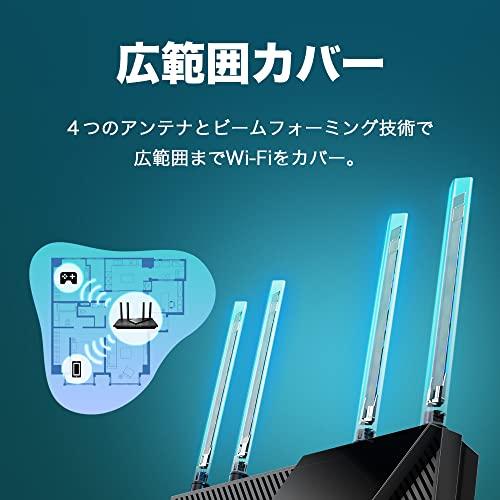Choosing a Wi-Fi router that won't fail We recommend up to 2.4 Gbps, pay attention to the antenna
Be sure to check the maximum communication speed stated in the Wi-Fi router package and specifications.

When choosing a Wi-Fi router, you should also check the maximum communication speed. Wi-Fi 6 routers can use the 5 GHz (GHz, 1 billion gigahertz) and 2.4 GHz bands, but what matters is the maximum communication speed in the 5 GHz band. [Visual explanation] How to choose a Wi-Fi router that will not fail
■ It is also important to use the 5GHz band and the 2.4GHz band properly.
The maximum communication speed of the Wi-Fi 6 router currently on the market in the 5 GHz band is 1.2 Gbit / s (bps) (1201 megaMbps, etc., 1 million megabits), 2.4 Gbps (2401 Mbps, etc.), 4.8 Gbps (4803 Mbps). Etc.) 3 types. On the other hand, the maximum communication speed of a Wi-Fi 6 compatible PC is 2.4 Gbps, so I would like to choose a Wi-Fi 6 router that has a maximum communication speed of at least higher. If it is less than that, the communication performance of the personal computer cannot be fully exhibited. It is also important to use the 5GHz band and the 2.4GHz band properly. For short-distance use, the 5GHz band, which has a high standard maximum communication speed and is not easily affected by surrounding radio waves, is suitable. On the other hand, the 2.4GHz band has the characteristics that the standard speed is slow and it is easily affected by the surrounding radio wave conditions. However, the radio waves are strong against obstacles, and the radio waves can easily reach far. In some cases, the 2.4GHz band is better for sending radio waves to remote rooms. The recommended number of connections announced by each manufacturer is also an important factor in choosing a router. Manufacturers say that the performance of Wi-Fi routers can be maintained within this number of connections. If you have an environment with an extremely large number of connections, you should select a model with a large number of recommended connections.
■ Pay attention to router functions such as moving and speeding up
In addition, I would like to pay attention to various functions such as "wireless moving function", "IPv6 IPoE", "band steering", "tri-band", and "mesh network" when selecting a product. If you have a Wi-Fi router with a wireless moving function, you can transfer the Wi-Fi settings such as SSID and encryption key from the Wi-Fi router you were using to the new Wi-Fi router. Since it is a mechanism to transfer settings using WPS, if the Wi-Fi router you have been using up to now supports WPS, you can transfer settings regardless of the manufacturer. If you want to speed up the Internet, be sure to check the support for IPv6 IPoE. Currently, it is difficult to understand because the two notations "IPv6 compatible" and "IPv6 IPoE compatible" are mixed depending on the product. The former indicates that it supports IPv6 communication. The latter "IPv6 IPoE support" can be used to speed up the Internet. To find out how to speed up the internet, be sure to look for the word "IPoE compatible". The "band steering" function is convenient for those who think that it is troublesome to switch connections one by one when using the 5GHz band and 2.4GHz band properly. Band steering judges the situation from the number of connected devices, the surrounding radio wave condition, speed, etc., and automatically switches the frequency band to be used. Make it easier to use the frequency band that suits your situation. Consider tri-band if you have an extremely large number of connections. Many Wi-Fi routers are dual-band routers with one 5GHz band and one 2.4GHz band. Tri-band routers can significantly increase the number of connections by adding another 5GHz band. The mesh network is a mechanism that allows stable communication anywhere in the house by spreading radio waves in a mesh pattern with multiple Wi-Fi routers. In the past, it was necessary to have the same product group from the same manufacturer, but now it is possible to build routers that support the unified standard Easy Mesh. The number of compatible products is gradually increasing.
Next page: ■ Also pay attention to the antenna and shape Last updated: NIKKEI STYLE